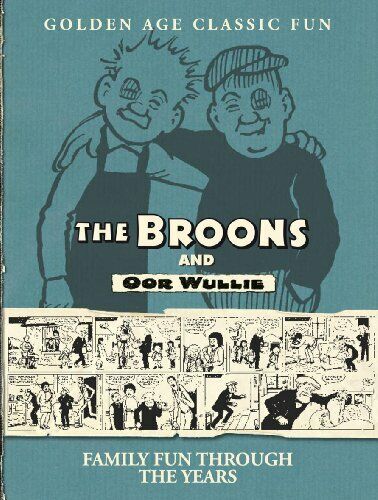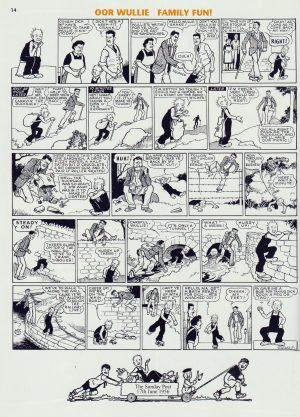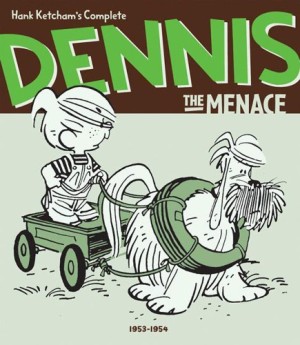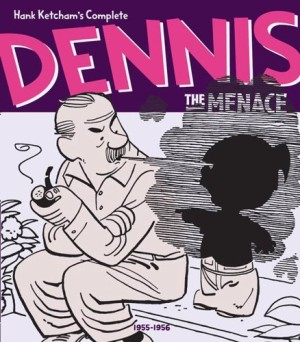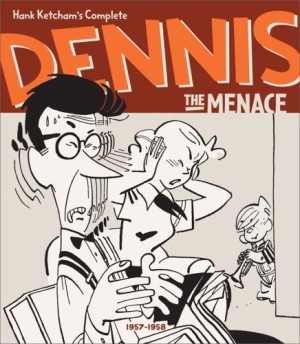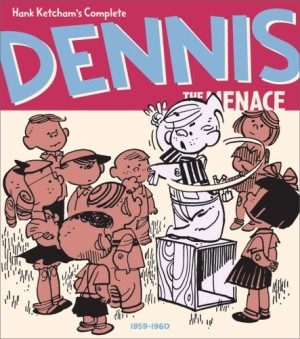Review by Frank Plowright
Oor Wullie and The Broons are much loved Scottish institutions that have appeared in the weekend Courier newspaper since 1937, both drawn over the first 32 years by Dudley D. Watkins. Having twice cycled through the decades from the 1940s to the 1960s, D.C. Thompson began theming their hardcover collections of Watkins newspaper strips. In practice, however, Family Fun Through the Years is a pretty broad category, as are the sub-topics encompassing the likes of holidays, food and sport.
These are knockabout comedies, with Wullie and his friends getting into scrapes, each strip famously beginning and ending with him sitting on an upturned bucket, while the broader cast of the Broon family allows for greater variations, although it’s a rare strip in which any family member is absent. The most visually distinctive is Hen Broon, exceptionally tall as if a prototype John Cleese, yet it’s rare his height feeds the jokes. He’s always in his bowler hat, to the point of one strip having him wearing it while swimming.
Time and again the descriptive richness of language delights. Some terms are known throughout Scotland, while others are unique to the Dundee area as the writers cultivated a deliberate parochialism. They wanted readers of strips circulated in Dundee and surroundings to see their lives reflected, so Wullie and the Broons speak in a broad dialect. Bask in terms such as cuddy (horse), muckle (large), or pan-loafy (posh), most of which can be understood from the illustrations. In keeping with the idea of giving a comical twist to lives, events and habits readers of the era would recognise, there are no ironic overtones, or patronising attitudes to working class families. The good times are celebrated and the struggles acknowledged.
As is always the case in these collections, the drawings are charming and the panels are packed. The strips from the 1930s and early 1940s are often too crowded, but by the end of the 1940s Watkins is prioritising clarity while still giving the characters room to breathe. From the start, though, Watkins was magnificent at comedy chaos, and the charm of his illustrations is underlined by the varied drawings showing the characters at the bottom of each strip.
An occasional misunderstanding is forced, an example being confusion over a Spaniard coming for tea who turns out to be a spaniel, but the writers (R. D. Low the most likely until the 1960s) generally maintain a credible selection of jokes while keeping the mood good-natured. This is another fine collection with great cartooning and it’s recommended North American readers who’ve never heard of Watkins or his strips sample at least one of the hardcover collections.
